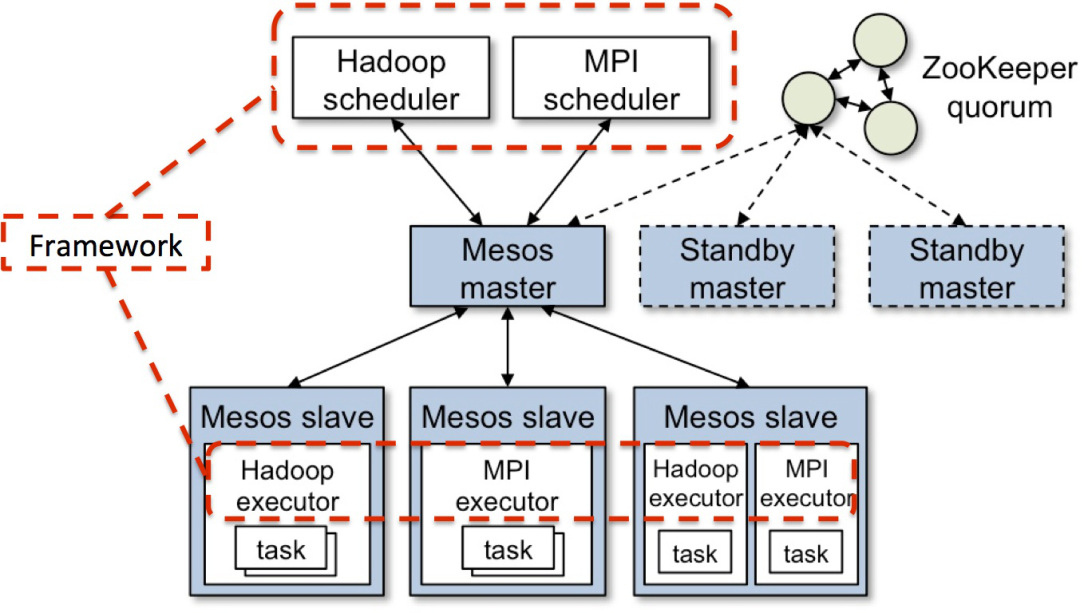本文内容摘自下列文章:
APACHE MESOS: THE TRUE OS FOR THE SOFTWARE DEFINED DATA CENTER?;
Mesos Architecture。
Imagine if instead of individual physical servers, we could aggregate all the resources in a data center into a single large virtual pool, exposing not virtual machines but primitives such as CPU, RAM, and I/O? In conjunction, imagine if we could break applications into small isolated units of tasks that could be dynamically assigned resources from our virtual data center pool, based on the needs of the applications in our data center? The analogy here would be a PC with an operating system that is pooling the PC’s processors and RAM and coordinating the allocation and deallocation of those resources for use by different processes. Now extend that analogy to make the data center the PC with Mesos as the operating system kernel. That, in a nutshell, is how Mesos is transforming the data center and making true SDDC a reality.
通俗地讲,可以把一个数据中心里所有的硬件资源看成一个整体。Mesos的功能就是为应用程序管理和分配这些资源。
Mesos结构如下图所示:
The modified diagram above from the Apache Mesos website shows how Mesos implements it’s two-level scheduling architecture for managing multiple types of applications. The first level is the master daemon which manages slave daemons running on each node in the Mesos cluster. The cluster consists of all servers, physical or virtual, that will be running applications tasks, such as Hadoop and MPI jobs. The second level consists of a component called a framework. A framework includes a scheduler and an executor process, the latter of which also runs on each node. Mesos is able to communicate with different types of frameworks with each one managing a different clustered application. The diagram above shows Hadoop and MPI but other frameworks have been written as well for other types of applications.
Mesos cluster里的每一个node都运行一个slave daemon程序,由一个master daemon程序统一管理。Mesos上运行的程序称之为framework,它包含两个部分:scheduler和executor process。分布式系统通常包含一个controller和多个worker,worker可以不依赖于controller而独立地运行。对于framework而言,scheduler就是controller,executor process就是worker。
A framework running on top of Mesos consists of two components: a scheduler that registers with the master to be offered resources, and an executor process that is launched on slave nodes to run the framework’s tasks (see the App/Framework development guide for more details about application schedulers and executors). While the master determines how many resources are offered to each framework, the frameworks’ schedulers select which of the offered resources to use. When a frameworks accepts offered resources, it passes to Mesos a description of the tasks it wants to run on them. In turn, Mesos launches the tasks on the corresponding slaves.
scheduler从master得到需要的资源,而executor process则会在slave node上运行framework task。
